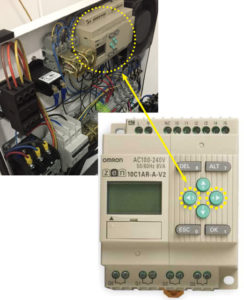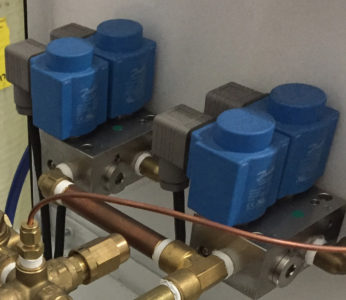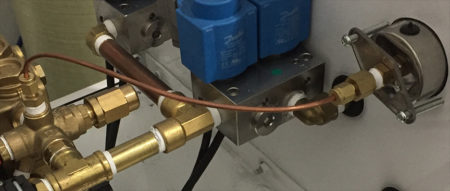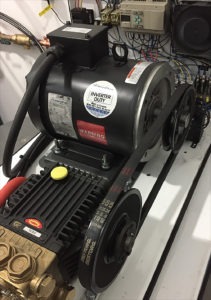The Inlet Water Solenoid Valve is the first piece of hardware which the treated water supply to the high pressure pump enters. Its’ function as a valve is to prevent low pressure water from flowing thru the pump while it is OFF or in STANDBY, and to allow water to flow thru to the pump while it is ON.
The graphic shows the location of the inlet water solenoid valve circled in yellow.
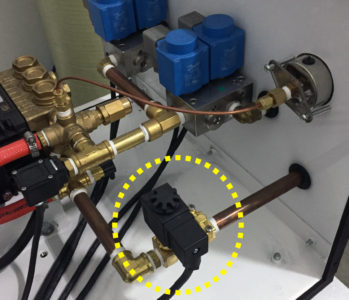
Supply water inlet solenoid valve (installed) in the Inlet Water Line for a High Pressure Humidity Control System
The diaphragm inside the inlet water solenoid valve is the internal viton rubber component that prevents flow when the valve is not energized and allows flow when it is energized. When the diaphragm is out of position or damaged, it may restrict flow when the valve is energized and it may allow water to flow when the valve is not energized. Therefore, it is important to make sure when removing and inspecting the diaphragm, to replace it correctly vs incorrectly. The following graphics are provided showing the top and bottom of the diaphragm and the correct positioning of the diaphragm when installed in the water solenoid valve.
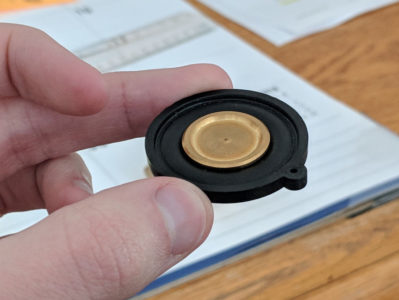
Top view of the diaphragm for the water inlet solenoid valve for a humidity control high pressure pump.
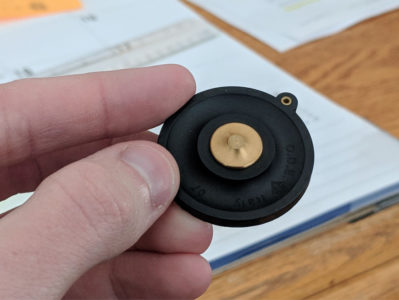
Bottom view of the diaphragm for the water inlet solenoid valve for a humidity control high pressure pump.
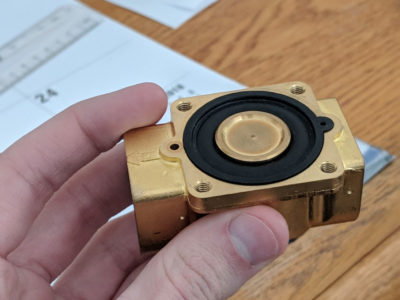
Top view of the diaphragm installed CORRECTLY in a water inlet solenoid valve for a humidity control high pressure pump.
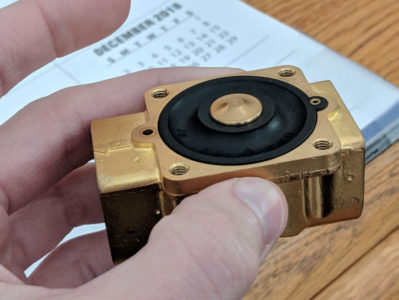
The Diaphragm INCORRECTLY installed in a water inlet solenoid valve for a humidity control high pressure pump

